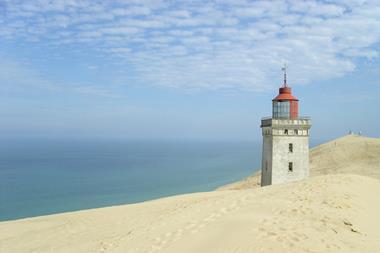Denmark’s AP Pension has said it cut pension costs for scheme members by 10% in the first six months of this year on the back of the continuing cost-saving effects of its merger with financial sector scheme FSP Pension two years ago.
Costs per member fell to DKK1,016 (€136.27) in the first half of 2014 from DKK1,133 in the same period last year.
Reporting a few interim figures ahead of its official first-half report, AP Pension also said regular pension contributions increased by 6.9% to DKK2.4bn in the January-to-June period from DKK2.3bn in the first six months of 2013.
Søren Dal Thomsen, managing director of AP Pension, said: “We can already see that the result in the period after we closed the books at the end of June has been very good, and that is making a further contribution to the positive development.”
He described the fall in costs as one of the most positive elements of the half-year figures.
“It shows us the merger with FSP Pension, which we conducted in 2012, is working and that the expected savings are continuing to materialise,” Dal Thomsen said.
Traditional guaranteed with-profits pensions produced a return of 7% in the first half, and unit-link pensions generated an average 4.7% return.
In the first half of 2013, traditional pension products made a 1.9% investment loss while unit-link products produced returns of between 3.1% and 7.3%.
In other news, the chief strategist of Denmark’s largest commercial pension provider PFA Pension warned that shares in social media companies should be viewed with caution and were too expensive.
Even though both Twitter and LinkedIn recently reported positive interim financial figures, the sector is high-priced, he said.
Henrik Henriksen, chief strategist at PFA Pension, said: “The shares are very expensive in relation to how much the companies are actually earning, so this is not an area we are particularly keen on.”
Last week, Twitter reported revenue of $312m (€234m) for its second-quarter financial period, up 124% from the same period the year before.
This was followed by LinkedIn’s report of a 47% year-on-year increase in sales to $534m.
Henriksen said that, while the interim reports from both companies had prompted fillips in their share prices, this had simply been a reaction to the fact the numbers were better than expected, and also the fact that the shares had performed badly so far this year.
The high prices of shares in social media firms were driven in particular by hopes about the amount the companies could earn in future, and this made them unsafe investments, he said.
“It is true that, compared with before, these companies have some exciting and more sustainable business models,” he said.
“But the question remains how much will they cost, and how much future growth is priced into the shares.”











No comments yet